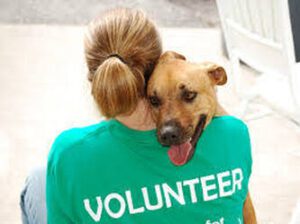Key Takeaways
-
Socializing an American Eskimo rescue dog is crucial for preventing fear and aggression.
-
Building trust involves consistent, positive interactions and patience.
-
American Eskimo dogs are intelligent and thrive with structured socialization techniques.
-
Introducing your dog to new people and environments gradually is key.
-
Common challenges can be overcome with persistence and the right strategies.
Socialising an American Eskimo Rescue Dog
Why Socializing Is Essential
Socializing your American Eskimo rescue dog is essential for their well-being and your peace of mind. This breed is naturally friendly and intelligent, but without proper socialization, they can become fearful or even aggressive. Most importantly, socialization helps your dog feel safe and confident in various environments and around different people and animals.
Imagine bringing your new rescue dog home only to find they are scared of strangers or aggressive towards other dogs. This can make everyday activities like walks or vet visits stressful for both you and your dog. Therefore, early and consistent socialization is the key to a happy, well-adjusted pet.

“American Eskimo, American Eskimo Dog …” from www.amazon.com and used with no modifications.
Building Trust With Your Rescue Dog
Building trust with your American Eskimo rescue dog is the first step in effective socialization. When your dog trusts you, they are more likely to follow your lead and feel secure in new situations. Trust is built through consistent, positive interactions and by creating a safe environment for your dog.
Here are some steps to build trust: caring for an American Eskimo puppy.
-
Spend quality time with your dog daily. This can include playtime, training sessions, and simply being together.
-
Use positive reinforcement techniques, such as treats and praise, to encourage good behavior.
-
Be patient and gentle. Avoid harsh corrections or punishment, as this can damage trust.
For example, I once worked with a rescue Eskie named Bella. She was extremely shy and fearful of new people. By spending time with her every day, offering treats, and speaking in a calm, reassuring voice, her owner was able to build a strong bond of trust. Over time, Bella became more confident and open to new experiences. For more information on caring for an American Eskimo dog, you can refer to this guide.
Understanding American Eskimo Rescue Dogs
American Eskimo dogs, or “Eskies,” are known for their intelligence, playful nature, and striking white coats. However, rescue Eskies may come with a history of neglect or trauma, which can affect their behavior. Understanding their background and specific needs is crucial for effective socialization.
Rescue dogs might have had limited exposure to different environments, people, or other animals. They may have developed fears or anxieties as a result. Recognizing these potential challenges allows you to tailor your socialization approach to meet their unique needs.
For instance, if your Eskie shows signs of fear around men, it might be because of a negative past experience. Knowing this, you can take gradual steps to help them feel comfortable around men, starting with short, positive interactions. For more tips on caring for your Eskie, you can visit this guide on American Eskimo puppies.
“One of the most common behavioral problems in American Eskimos is a fear of strangers. While Eskies are loving around their family, they can act shy or aggressive when new people come too close.” – Dog Behaviorist & Trainer
Effective Socialization Techniques
Effective socialization techniques involve gradual exposure to new experiences, positive reinforcement, and consistency. Here are some tried-and-true methods:
-
Gradual Exposure: Introduce your dog to new people, places, and animals slowly. Start with controlled environments and gradually increase the level of difficulty.
-
Positive Reinforcement: Reward your dog with treats, praise, or playtime for calm and friendly behavior. This reinforces the idea that new experiences are positive.
-
Consistency: Regularly expose your dog to socialization opportunities. Consistency helps reinforce positive behaviors and reduces anxiety.
For example, if you want to introduce your Eskie to other dogs, start with a calm, friendly dog in a neutral environment. Allow them to sniff and interact at their own pace, rewarding them for calm behavior. Gradually increase the number of dogs and the complexity of the environment as your Eskie becomes more comfortable.
In the next part of the article, we’ll delve deeper into overcoming common challenges and provide real-life success stories to illustrate the impact of effective socialization.
Tips for Overcoming Common Challenges
Socializing a rescue dog can come with its own set of challenges, but with patience and the right approach, you can overcome them. Here are some common challenges and tips to address them:
-
Fear of Strangers: If your Eskie is afraid of strangers, start by introducing them to new people one at a time in a calm environment. Encourage the stranger to offer treats and speak softly. Gradually increase the number of people as your dog becomes more comfortable.
-
Aggression Towards Other Dogs: Aggression can be a sign of fear or lack of socialization. Begin by walking your dog at a distance from other dogs and gradually decrease the distance as they become more relaxed. Use treats and praise to reward calm behavior.
-
Separation Anxiety: Many rescue dogs experience separation anxiety. Practice leaving your dog alone for short periods and gradually increase the time. Provide toys and treats to keep them occupied and create a positive association with being alone.
For instance, I worked with a rescue Eskie named Max who was aggressive towards other dogs. By starting with controlled interactions and rewarding him for calm behavior, Max’s owner was able to reduce his aggression significantly over time. Learn more tips on how to care for an American Eskimo Puppy.
Success Stories: Real-Life Examples
Real-life success stories can be incredibly motivating and provide valuable insights into what works. Here are a few examples:
“Bella, a rescue Eskie, was extremely shy and fearful of new people. Her owner spent time with her every day, offering treats and speaking in a calm, reassuring voice. Over time, Bella became more confident and open to new experiences.”
“Max, a rescue Eskie, was aggressive towards other dogs. By starting with controlled interactions and rewarding him for calm behavior, Max’s owner was able to reduce his aggression significantly over time.”
These stories highlight the importance of patience, consistency, and positive reinforcement in socializing rescue dogs. They also show that even the most challenging behaviors can be improved with the right approach.
Final Thoughts
Socializing an American Eskimo rescue dog is a rewarding journey that requires patience, consistency, and positive reinforcement. By understanding your dog’s unique needs and gradually exposing them to new experiences, you can help them become a well-adjusted and confident companion. Remember, the key to successful socialization is building trust and creating positive associations with new people, places, and situations.
With dedication and the right techniques, you can overcome common challenges and enjoy the many benefits of a well-socialized Eskie. Whether you’re dealing with fear, aggression, or separation anxiety, there is always a way to improve your dog’s social skills and enhance their quality of life. For example, you might want to consider resources on how to adopt an American Staffordshire Terrier to learn more about socializing rescue dogs.
Frequently Asked Questions (FAQ)
How long will it take to socialize my rescue American Eskimo dog?
The time it takes to socialize a rescue American Eskimo dog can vary depending on their background, personality, and the consistency of your efforts. Some dogs may show improvement in a few weeks, while others may take several months to become fully comfortable in new situations. The key is to be patient and consistent, celebrating small victories along the way.
What should I do if my American Eskimo dog shows signs of aggression?
If your American Eskimo dog shows signs of aggression, it’s important to address the behavior promptly and safely. Start by identifying the triggers and gradually exposing your dog to them in a controlled environment. Use positive reinforcement to reward calm behavior and consider seeking the help of a professional dog trainer if the aggression persists.
Can older American Eskimo rescue dogs be socialized effectively?
Yes, older American Eskimo rescue dogs can be socialized effectively, although it may take more time and patience compared to younger dogs. The principles of gradual exposure, positive reinforcement, and consistency still apply. Older dogs can learn new behaviors and adapt to new environments with the right approach and dedication. For more information on adopting different breeds, you can read about adopting an American Water Spaniel.


